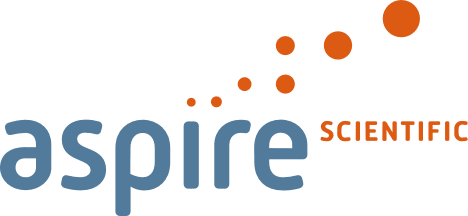The 2025 European Meeting of the International Society for Medical Publication Professionals (ISMPP) was held in London on 27–29 January. The meeting, which was themed ‘Core Values for an Integrated Age’, saw a record-breaking 418 delegates in attendance.
A summary of the second day of the meeting is provided below to benefit those who were unable to attend the meeting, and as a timely reminder of the key topics covered for those who did.
Summaries of Day 2
Empowering patient voices in authorship: navigating barriers and enhancing support
KEY TAKEAWAYS
- Patient authors provide valuable insights, but barriers like submission challenges, lack of support, and compensation concerns must be addressed.
- Collaboration among publishers, industry, and advocacy groups is key to ensuring fair and meaningful inclusion in research.
Moderated by Stuart Donald (Krystelis), this parallel session addressed the challenges and opportunities surrounding patient involvement in medical publications. Ngawai Moss (independent patient advocate) and Laurence Woollard (On The Pulse) represented the patient author point of view, while Emma Doble (BMJ) and Rachel Kendrick (AstraZeneca) provided a publisher and industry perspective, respectively. Discussions focused on the barriers patient authors face, support mechanisms, and ethical considerations regarding compensation.
The patient journey to authorship
For many patient authors, the journey begins with advocacy or participation in clinical trials. However, the transition to formal authorship presents several hurdles. The complexity of the submission process can be overwhelming, requiring knowledge of formatting, peer review expectations, and revisions. Many patients lack mentorship, making it difficult to navigate rejections and feedback.
Time constraints also play a significant role. Many patient authors have health conditions, caregiving responsibilities, or professional commitments that limit their ability to engage fully in the writing process. Additionally, access to medical journals remains a major barrier, as many patients cannot afford subscription fees to read relevant research.

Support from publishers and industry
Publishers like BMJ have been leading the way in integrating patient voices, having published patient-authored articles for over 30 years. Their initiatives include patient advisory panels, editorial board representation, and author guidance to simplify the publication process. To further ease the journey, BMJ assigns dedicated contacts to patient authors, reducing the administrative burden of participation.
The industry perspective on patient authorship is evolving but remains inconsistent. According to Kendrick, companies recognise the value of patient perspectives but often lack standardised approaches to inclusion. Many organisations are now working to establish clearer guidelines and engage patients earlier in the research process, ensuring their voices shape publications from the outset rather than as an afterthought.
Many organisations are now working to establish clearer guidelines and engage patients earlier in the research process, ensuring their voices shape publications from the outset rather than as an afterthought.
Compensation and ethical considerations
The issue of compensating patient authors sparked debate, with Woollard highlighting concerns about accessibility, and arguing that the elitism in academic publishing creates barriers for patient contributors. He advocated for financial reimbursement, particularly for industry-sponsored publications, and called for fair market value standardisation to ensure consistency in compensation. Providing the counterargument, Kendrick cautioned that direct payment for authorship could introduce bias and reputational risks, particularly in industry-funded research. Instead, she emphasised the importance of transparency and aligning compensation policies with ethical publishing standards.
Recognition and authorship tagging
There is no clear consensus on how to identify patient authors in medical literature. While some advocate for clear labelling to highlight patient contributions, others worry that ‘patient author’ tags could reinforce tokenism. One proposed solution is allowing multiple affiliations, recognising patient authors not just for their lived experience but also for their expertise in advocacy or research.
Some patient authors also prefer anonymous or pseudonymous contributions, protecting them from public scrutiny. To address this, the panel recommended early discussions between patient authors and collaborators to set expectations regarding authorship disclosure and acknowledgment.
The shape of things to come? Beyond the traditional manuscript (a balloon debate)
KEY TAKEAWAYS
- An interactive debate saw the audience vote on the future of scientific communication.
- AI, PLS, podcasts, and videos were proposed as alternative publication formats, but traditional manuscripts prevailed as the foundation of medical publishing.
Rethinking scientific publications: A balloon debate
In this parallel session, a dynamic balloon debate challenged the traditional scientific manuscript’s role in modern publishing. Although scientific papers have moved online, their core format has remained largely unchanged since 1665. Thought leaders advocated for alternative publication formats better suited to today’s digital landscape.

Alternative formats in medical communication
- AI-generated content: Jason Gardner (Real Chemistry) introduced ‘GEMMA’ (Generates Every Medical Manuscript Artificially), arguing that AI could tailor scientific content for different audiences while maintaining the manuscript as a cornerstone.
- PLS: Amanda Boughey (Envision Pharma Group) highlighted data showing high usefulness ratings of PLS among HCPs, emphasising that PLS enhance accessibility without compromising scientific integrity.
- Podcasts & audio articles: Clare Cook (Adis) emphasised the flexibility of audio formats, allowing HCPs to absorb information on the go. Podcasts can incorporate expert voices, patient perspectives, and facilitate nuanced discussions while being peer-reviewed and indexed on PubMed.
- Video explainers: Sam Cavana (Taylor & Francis) underscored the rise of visual media, particularly among younger HCPs. Video explainers can be used to effectively demonstrate mechanisms of action and provide quick, engaging access to complex data.
- Traditional manuscripts: Erin Crocker (Real Chemistry) defended the traditional manuscript as the foundation of medical publishing. She argued that while alternative formats are valuable, they must be grounded in rigorous, peer-reviewed research.
The debate & final verdict
Following audience votes, AI and podcasts were eliminated first, followed by video explainers. The final debate centred on PLS versus traditional manuscripts. While PLS make scientific information more accessible, concerns were raised about maintaining scientific integrity in simplified formats. In the end, the traditional manuscript prevailed.
In her victory speech, Crocker acknowledged the value of integrating multiple formats to enhance scientific communication, advocating for a collaborative future where AI, PLS, podcasts, and videos complement, rather than replace, traditional manuscripts.
Erin Crocker acknowledged the value of integrating multiple formats to enhance scientific communication, advocating for a collaborative future where AI, PLS, podcasts, and videos complement, rather than replace, traditional manuscripts.
Interestingly, in a second running of this session, the audience reached a different conclusion, with PLS emerging as the winning format. This outcome highlights the evolving perspectives on how best to communicate scientific research in an increasingly digital world.
Making meetings better for all
KEY TAKEAWAY
- Inclusion isn’t just about making congresses accessible—it’s about fostering connection and belonging for all attendees.
Recognising that there is still room to improve inclusivity at congresses, this parallel session tackled a critical issue: making scientific meetings accessible to all. The session featured perspectives from experts who discussed the barriers attendees face and the steps needed to improve accessibility and engagements.
Patient perspectives
Matt Eagles (Havas Lynx) shared his personal experiences, emphasising the challenge of feeling connected to the scientific data presented at congresses. He pointed out that accessibility is not just about attending, but also about engaging meaningfully. He recounted how his Parkinson’s makes it difficult to stand for lengthy periods at poster sessions. Simple solutions, such as offering audio descriptions, could bridge this gap. With around one-quarter of the UK population having a disability or alternative needs, improving accessibility would benefit a significant proportion of attendees. Eagles also highlighted how inclusive seating arrangements, such as circular tables instead of rows, discourage segregation and fosters a sense of collaboration.
With around one-quarter of the UK population having a disability or alternative needs, improving accessibility would benefit a significant proportion of attendees
Charlotte Rowan (Caudex) expanded on the issue, noting that economic constraints are also significant barriers for many attendees. Hybrid meetings offer a partial solution, enabling broader participation. She also emphasised that providing logistical support, such as childcare and nursing rooms, could ensure that professionals with caregiving responsibilities can attend. Rowan stressed that organisers often “don’t know what they don’t know,” making it essential to involve diverse voices, including patients, in event planning.
The discussion also highlighted social considerations. Eagles shared how small acts, such as someone offering to get him food at a buffet, made a profound difference in his experience of inclusion. However, significant challenges still remain. Caregiver needs was highlighted as a substantial barrier. Few congresses offer free tickets or subsidies for caregivers, leaving some patients facing double the cost, or simply unable to attend.
What can we do?
Cate Foster (Oxford PharmaGenesis), an author of the ‘Good Practice for Conference Abstracts and Presentations’, discussed plans to update these guidelines to include ED&I considerations. The revised guidelines will address practical aspects such as poster accessibility, with easy-to-implement changes like positioning QR codes at a wheelchair-friendly height.
The ISMPP organisers themselves shared their efforts to integrate accessibility considerations into their event planning. This year, ISMPP offered captioning services, they chose venues with good transport links, and avoided major religious and national holidays. The patient support programme, which provides travel assistance to patient advocates, was another successful step towards inclusivity.
Stephen Cutchins (Cvent) highlighted the importance of seeing accessibility as an investment, not a cost. Thoughtful planning increases attendance and engagement, ultimately benefiting event organisers. While virtual and hybrid formats offer accessibility benefits, they lack the networking advantages of in-person meetings. Future improvements could include better virtual networking tools, such as avatars that simulate in-person interactions.
Keynote: the compass within: staying true to core values amidst chaos
KEY TAKEAWAY
- Our core values are shaped by stories we are told from childhood, but we must challenge our inherent beliefs to foster inclusivity—both in society and in AI development.
Wednesday’s keynote speaker Naomi Sesay, Head of Creative Diversity at Channel 4, discussed how we can stay true to our core values in a chaotic world, and explored how our morals can feed into AI.
How do we get our values?
Sesay believes that we’re hardwired to hear stories and they resonate whether we believe them or not. From childhood, we absorb our values through stories told to us at home, at school and by society generally. These stories can be the truth, half-truth, or even untrue, but we accept them through needing to belong to our community.
We’re hardwired to hear stories and they resonate whether we believe them or not. We absorb our values through stories told to us at home, at school and by society generally.
Challenging where truth comes from
Sesay highlighted that our understanding of the truth is based on Western education, but if we fail to seek knowledge from non-Western societies, we risk marginalising them to our detriment. For example, GraphCast is an AI global forecasting tool, which can predict global weather with immense accuracy but has difficulty predicting short-term changes in local weather. In contrast, indigenous communities around the world have developed systems of predicting local weather to a very high degree of accuracy. Could we learn something from them?
Inclusivity is key for success
One ‘story’ Sesay pointed out that we are taught to accept is Darwin’s theory of evolution. We do not question his theory despite the fact that even he had doubts about certain aspects of it, and Sesay called to attention the original complete title of his famous book, On the Origin of Species: “On the Origin of Species by Means of Natural Selection, or the Preservation of Favoured Races in the Struggle for Life”. She emphasised this as an example where we must question the stories we are told. We run with Darwin’s concept of ‘survival of the fittest’ in a ‘dog eat dog world’, whereas Sesay argued that nature works best in collaboration and harmony. Indeed companies that prioritise empathy and inclusivity allow their employees to stay true to their individual core values, and this feeling of inclusion fosters collaboration. She emphasised, however, that while companies and governments need to focus on inclusivity, the onus is also on the individual to evolve and challenge our core beliefs.
We need to teach AI inclusivity
“AI is not sentient yet. We are still in control, and we need to talk about ethics now.”
Focusing on how morals feed into a future where AI will become more a part of our world, Sesay highlighted that discriminatory ideas, which we absorb from the stories we are told from childhood, become imprinted in our neurology and are difficult to “unlearn”, much as riding a bike would be. Similarly, AI is currently a “toddler” and we need to be mindful that whatever we teach it now will be retained and impact how it learns. To illustrate this point, Sesay recalled how after giving AI a prompt to “create AI as a sentient being”, it generated a humanoid image with Caucasian features, seemingly by default. This, she believes, is due to AI being used predominantly by the Western world and shows that AI is already not representing all cultures and values equally. She reminds us, however, that AI is not sentient yet. We are still in control, and we need to talk about ethics now.
Member research oral presentations
What about sex? A call to action for improved sex and gender reporting in industry-sponsored clinical research: results from a literature review
KEY TAKEAWAY
- Enhancing adherence to SAGER guidelines in industry-sponsored trials is crucial for improving the relevance of research findings.
Liz Southey (The Salve Health) shared findings from a study assessing sex and gender reporting in clinical research. Despite their influence on disease progression, treatment response, and healthcare access, these factors are often underreported in industry-sponsored trials—limiting the relevance and applicability of findings.
Just 37% of journals mentioned the SAGER guidelines, and key checklist items were largely overlooked.
The study reviewed articles published between 2023 and 2024 to assess adherence to the Sex and Gender Equity in Research (SAGER) guidelines, introduced in 2016 to improve reporting standards. Of 252 screened studies, only 28 met the eligibility criteria. Alarmingly, just 37% of journals mentioned the SAGER guidelines, and key checklist items—such as defining sex and gender or analysing data by sex—were largely overlooked. Additionally, gender representation among authors was also imbalanced, with only 35% of identified authors being women.
These gaps in reporting risk exacerbating health disparities. For example, women in clinical trials experience twice the rate of adverse drug reactions compared to men, highlighting the need for better reporting of sex differences. Beyond health outcomes, the gender data gap also has significant economic implications. Research by the World Economic Forum suggests that closing this gap could unlock 75 million disability-adjusted life years and generate $1 trillion in annual global gross domestic product.
In closing, Southey emphasised the role of medical publication professionals in advocating for better reporting practices. Promoting awareness and adherence to SAGER guidelines can improve research inclusivity, making findings more applicable to diverse populations and ultimately enhancing healthcare outcomes.
Speaking with one voice: an integrated and innovative planning framework for clear and consistent communications
KEY TAKEAWAY
- Use of an Integrated Medical Communication Plan fosters collaboration, consistency, and alignment in pharmaceutical communications, improving message clarity and engagement with healthcare professionals.
Debra Mayo (Otsuka) addressed the challenges of fragmented pharmaceutical communications, emphasising the need for a unified voice. She introduced an Integrated Medical Communication Plan (IMCP)—a strategy designed to enhance collaboration, maintain consistency, and ensure alignment across teams.
Recent data from Sermo’s HCP Sentiment Series highlights the importance of targeted communication: 81% of physicians prefer relevant, personalised information, and 72% are more likely to engage with such communications. However, inconsistent messaging between medical affairs and commercial teams often creates confusion, reducing clarity and impact.
The IMCP framework is built on four key principles:
- Collaboration: breaking down silos to align messaging across teams.
- Consistency: maintaining a unified scientific narrative across all channels.
- Alignment: synchronising strategy and tactics through structured planning.
- Integration: prioritising strategic value and audience engagement.
To develop and implement the IMCP, a core committee identified key challenges, including siloed teams and inconsistent messaging. Their solution? A centralised platform for information access and knowledge sharing.
They also developed practical tools—spreadsheets, Power BI dashboards, and strategic lexicons—to streamline communication, reduce redundancy, and boost efficiency. At the centre of this initiative is the IMCP dashboard, a central hub where teams can track, update, and refine communication in real time.
The Integrated Medical Communication Plan dashboard is a central hub where teams can track, update, and refine communication in real time.
By embracing an integrated approach, pharmaceutical companies can enhance engagement with healthcare professionals, improve message clarity, and strengthen their scientific voice—ultimately fostering more effective and impactful communication.
A pilot study evaluating the performance of a custom-built large language model-based app that uses reporting guideline items to generate manuscript abstracts
KEY TAKEAWAY
- Conspectus, an AI-powered tool, enhances manuscript abstract preparation with accuracy and positive user feedback. Nonetheless, human validation remains essential.
Niall Harrison (OPEN Health) and colleagues, in collaboration with ARTEFACT, assessed whether Conspectus, a custom-built large language model (LLM)-based application that generates abstracts using reporting guidelines, could enhance the accuracy and appropriateness of manuscript abstracts.
Conspectus generated well-structured, accurate abstracts, and received positive user feedback, though human oversight remains essential.

The workflow followed a structured process:
- Manuscript upload: users upload a manuscript and set key parameters (eg, study type).
- Prompt generation: Conspectus creates a tailored prompt based on user input and relevant reporting guidelines.
- Prompt review: users review and refine the proposed prompt structure.
- Abstract drafting: Conspectus generates an abstract, which users then review and fact-check.
In this pilot study, users tracked their time and assessed usability, while reviewers evaluated abstract quality. The results were promising: 95% of users would recommend Conspectus, and 82% felt it improved abstract preparation. Adoption was swift—81% of users were ready to use Conspectus within 15 minutes, and 61% saw potential time savings. Accuracy was highest for results sections (98%) but lower for conclusions (78%). Appropriateness scores varied across sections, with 69% meeting expectations for introductions and 58% for results, highlighting the need for better prompt refinement and user training.
Limitations included lower accuracy for study types not well-represented in training data and analyses lacking dedicated reporting guidelines (eg, post-hoc clinical trial analyses). Improving briefing forms and prompt training could enhance performance, while future research should explore real-world applications and cases with greater time-saving potential.
How can we collaborate with authors to integrate AI in publication development?
KEY TAKEAWAY
- Transparency is essential when integrating AI into the publication process.
The role of generative AI in medical publications is evolving. In this session, industry, agency, and publisher panellists discussed practical tips for AI integration, with a little help from some artificial friends.
The agency perspective
Nina Divorty (CMC Connect) highlighted that the perspective of authors is critical, as they have final responsibility for the publication. Results from an audience poll showed that most participants had not yet used AI in collaboration with authors. Divorty recommended early communication and active discussion with authors to obtain agreement per ICMJE criteria, as well as to confirm the target journal and clarify their guidelines around AI use.
The publisher’s perspective
Stephanie Preuss (Springer Nature) introduced four AI-generated personas (created using video AI video platform Colossyan) to illustrate different author attitudes towards AI:
- The Anarchist: Pro-AI and experimental but may overlook guidelines.
- The Anxious: Wary of AI, deeply concerned about accuracy and ethics.
- The Apathetic: Lacks a deep understanding of AI but is agreeable to its use.
- The Conscious Collaborator: Informed, cautious, and committed to ethical integration.
These personas broadly conformed to attitudes that audience poll participants had encountered in the workplace. Preuss noted that although authors have raised concerns about declaring AI use in publications, many researchers are already using AI for tasks such as translation, fraud detection, and plain language summaries. Preuss stressed that AI cannot be listed as an author, that transparency is key, and there remains a need for “a strong human handshake in the centre”.
“There remains a need for a strong human handshake in the centre [of AI integration].”
The industry perspective
James Dathan (AstraZeneca) acknowledged the huge potential of AI, but that authors deserve transparency around the extent of AI’s contribution to the work, as well as rigorous proof of the technology’s efficacy, or lack thereof. On this last point, Dathan stressed that negative data is also important, that there may be situations where AI use is not appropriate, and that “just because we can doesn’t mean we should”.
Wrapping up, all the panellists agreed that transparency, integrity, and accountability were vital as we enter this exciting new era of integrating AI into the development of medical publications. Revealingly, cautious and curious were the two most frequently occurring words in an audience word cloud poll.
The role of a medical publication professional in 2035: redundancy by robots?
KEY TAKEAWAY
- In the next decade, the role of the medical publication professional may evolve significantly, but core values—ethical storytelling, transparency, research integrity, and effective content dissemination—will remain fundamental.
The future of medical publications: Embracing AI and upholding core values
In a session sponsored by Real Chemistry, moderator Mike Dixon (Healthcare Communications Association) guided participants through an exploration of the future role of medical publication professionals, focusing on how the integration of AI will shape their responsibilities. Reflecting on the past decade, Dixon prompted attendees to consider whether the fundamentals of their profession have shifted and how they might evolve by 2035.
Ann Gordon kicked off the discussion by addressing the potential day-to-day changes AI could bring and what professionals might seek from their roles in the future:
- AI integration: From the advent of conversational AI like ChatGPT in 2022 to the possibility of autonomous agents, AI is set to become integral to daily tasks.
- Technological advancements: The emergence of AI-powered tools, such as wearable devices providing instant information and portable virtual workspaces, will enhance storytelling capabilities and elevate data visualisation techniques.
- Evolving influencer profiles: Professionals will need to collaborate with digitally savvy opinion leaders who have significant influence in the digital and social media landscapes.
- Sustainability and accessibility: Utilising holographic technology for virtual meeting attendance can promote both sustainability and accessibility.
Gordon emphasised that while technology will evolve, core values like ethical storytelling, transparency, and unbiased information dissemination will remain constant. Medical publication professionals will play a crucial role in guiding healthcare providers toward trustworthy content.
Medical publication professionals will play a crucial role in guiding healthcare providers toward trustworthy content.
Considering the entry of Generation Alpha into the workforce by 2035, a poll revealed that most participants believe this cohort will experience digital fatigue and seek more human interaction to stay engaged and build strong working relationships.
Next up, Catarina Fernandes (Johnson & Johnson) offered a pharmaceutical industry perspective, highlighting potential future opportunities and challenges in areas such as job descriptions, technological adoption, evidence dissemination, and collaboration. Key takeaways included:
- Adaptability: Professionals must be flexible, adept with new data forms, and open to innovative dissemination methods.
- Ethical standards: Maintaining strict ethical standards involves ensuring transparency in research, upholding a robust peer review system, promoting inclusivity, avoiding bias, and fostering trust within the scientific community.
Hamish McDougall (Sage) discussed the publisher’s role in 2035, focusing on research integrity and content dissemination. McDougall noted that while content will become more flexible and audiences more diverse, the core responsibilities of publishers—ensuring research integrity and effectively disseminating content—remain unchanged.
Dixon concluded the session by stressing that while AI will not replace medical publication professionals, those unwilling to collaborate with AI may be surpassed by those who do.
Closing remarks, raffles, and poster awards
Chair of the Programme Committee, Mithi Ahmed-Richards, and Vice-chair, Catherine Elliott, concluded the 2025 European Meeting of ISMPP with reflections on this year’s theme, Core Values for an Integrated Age. They also announced and congratulated this year’s poster prize winners:
- Most Reflective of Meeting Theme: Characteristics of qualitative-based patient experience data publications in rare diseases, neuroscience, and oncology – Sarah Thomas, Oleks Gorbenko, Jacqui Oliver, Catherine Elliott, Simon R. Stones, Charles Pollitt
- Best Original Research & Most Visionary Research: Establishing a lay review panel to ensure medical research accessibility – Oleks Gorbenko, Nathalie Cannella, Marta Moreno, Geoff Kieley, David Gothard, Jo Gordon, Sarah Thomas
- Best Visual Communication: Speaking their language: Healthcare professionals’ use of plain language materials with patients – Isabel Katz, Alexa Holland, Hamish McDougall, Sarah J. Clements
Ahmed-Richards and Elliott extended their gratitude to the Meeting Programme Committee, presenters, sponsors, partners, and exhibitors for their contributions. Finally, they reminded attendees that registration is now open for the 21st Annual Meeting of ISMPP, taking place 12–14 May 2025 in Washington, DC.
Written as part of a Media Partnership between ISMPP and The Publication Plan, by Aspire Scientific.






